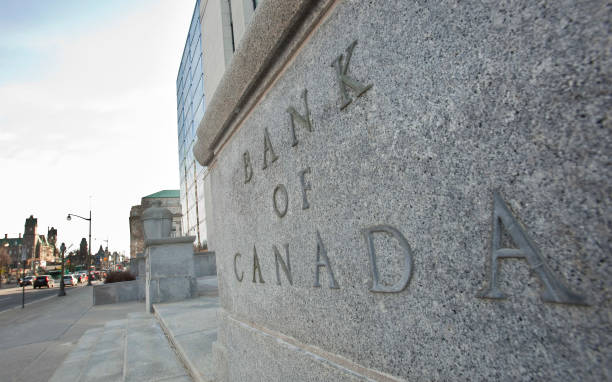
Bank of Canada Keeps Interest Rates Steady at 2.75 Percent
Author: Matthew Horwood
OTTAWA—The Bank of Canada has maintained its key interest rate at 2.75 percent for the second time in a row, saying uncertainty around tariffs remains high but that Canada’s economic growth was slightly higher than expected in the first quarter of the year.
“Uncertainty remains high, the Canadian economy is softer but not sharply weaker, and we’ve seen some firmness in recent inflation data,” said Bank of Canada Governor Tiff Macklem on June 4. “Against this backdrop, we decided to hold the policy rate unchanged as we continue to gain more information on U.S. trade policy.”
Similar to the Bank’s decision to hold interest rates steady in April, Macklem told reporters that there is uncertainty about the impact of U.S. tariffs on Canada’s economy. He noted that since the last decision, the United States and China had stepped back from “extremely high” tariffs and bilateral trade negotiations have begun with many countries.
Macklem noted tariffs still remain higher than at the beginning of the year, and the United States has continued threatening further levies. U.S. President Donald Trump doubled steel and aluminum tariffs from 25 percent to 50 percent on June 4, which Macklem said underscores the “unpredictability” of U.S. trade policy.
Economic growth in Canada came in at 2.2 percent in the first quarter of the year, with high spending on machinery and equipment pulling up business investment and consumption continuing to grow. The Bank noted that housing activity and government spending was down, while unemployment grew to 6.9 percent, and the economy is expected to be weaker in the second quarter of the year.
The Bank also said the global economy has shown “resiliency” in recent months, which it attributed to a surge in trade activity to get ahead of American tariffs. It said the U.S. has had strong domestic demand and slightly lower inflation, Europe has seen economic growth propped up by imports and the promise of higher defence spending, while China’s economy has slowed as fiscal supports end and exports to the United States decrease.
Higher Inflation
Inflation in Canada fell to 1.7 percent in April due to the end of the federal carbon tax, down from 2.3 percent in March. Excluding taxes, inflation would have stayed steady, surpassing the Bank’s expectation. The Bank said higher goods prices could be due to disruptions in trade, and many businesses have reported they will be facing higher costs as they look for alternative suppliers and markets.
The Bank noted that recent surveys showed businesses plan to pass on higher costs to consumers, and consumers expect that they will see higher prices as a result. “The Bank will be watching the measures of underlying inflation closely to gauge how inflationary pressures are evolving,” Macklem said.
Macklem said while there was a “clear consensus” among the Bank’s governing council to keep rates unchanged in June, several members believed rates could be reduced if Canada’s economy weakens further due to U.S. tariffs but inflation remains low. The Bank will continue to examine how U.S. tariffs reduce demand for Canadian exports, how this impacts business investment and household spending, and how quickly cost increases are passed on to consumers.
“Faced with unusual uncertainty, the governing council is proceeding carefully, with particular attention to the risks. This means we are being less forward-looking than usual,” Macklem said.
The Bank’s Monetary Policy Report released in April forecasted that in a scenario where the U.S. imposed 12 percent tariffs on Canada and Mexico, 25 percent tariffs on vehicles and parts, and 25 percent tariffs on all other countries, Canada would see its trade fall “drastically.” The illustrative scenario said Canadian exporters would be forced to reduce production and lay off workers, unemployment would rise while incomes dropped, the country would enter a recession by the middle of 2025, and inflation would rise above 3 percent in 2026.
The Bank will announce its next interest rate decision on July 30